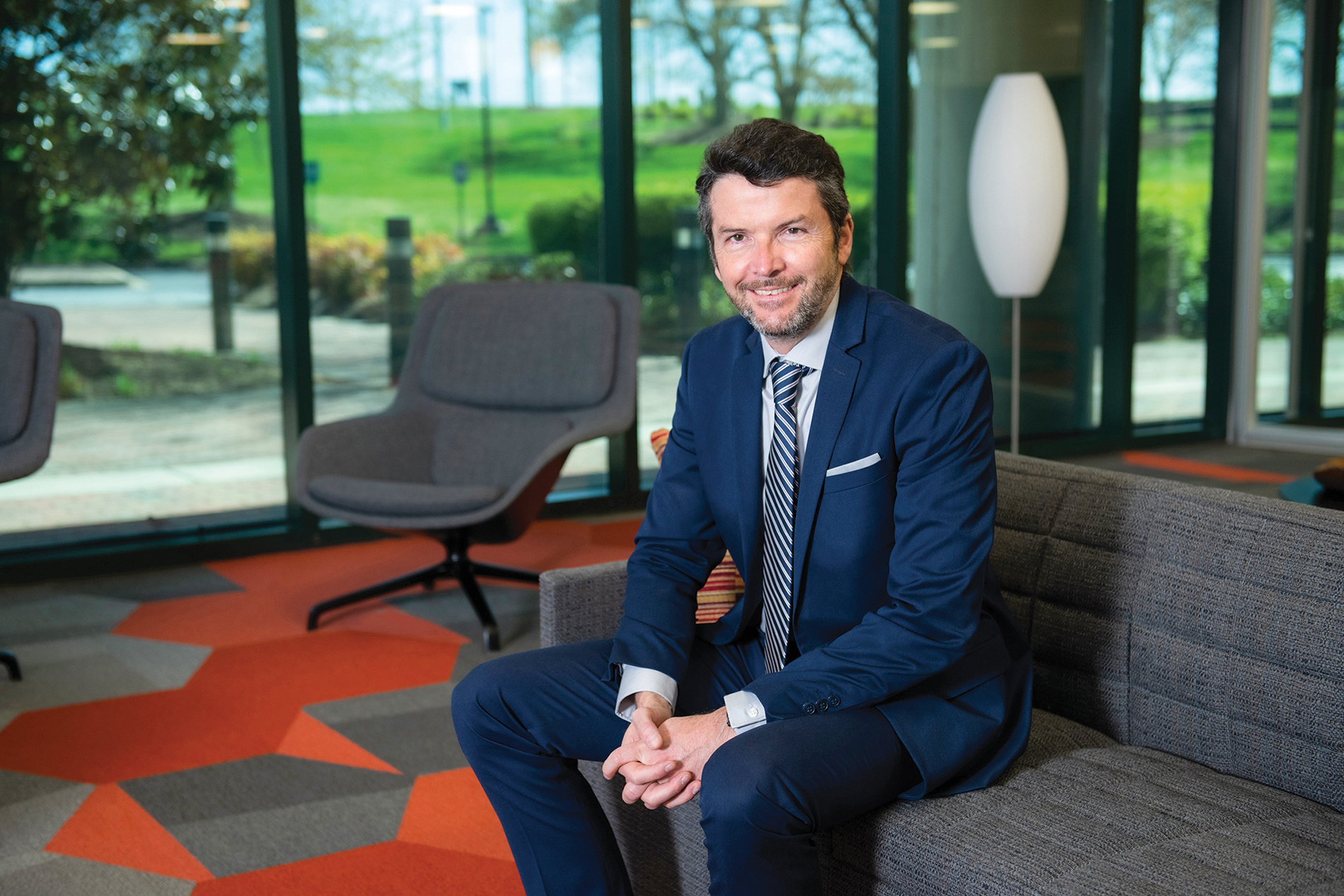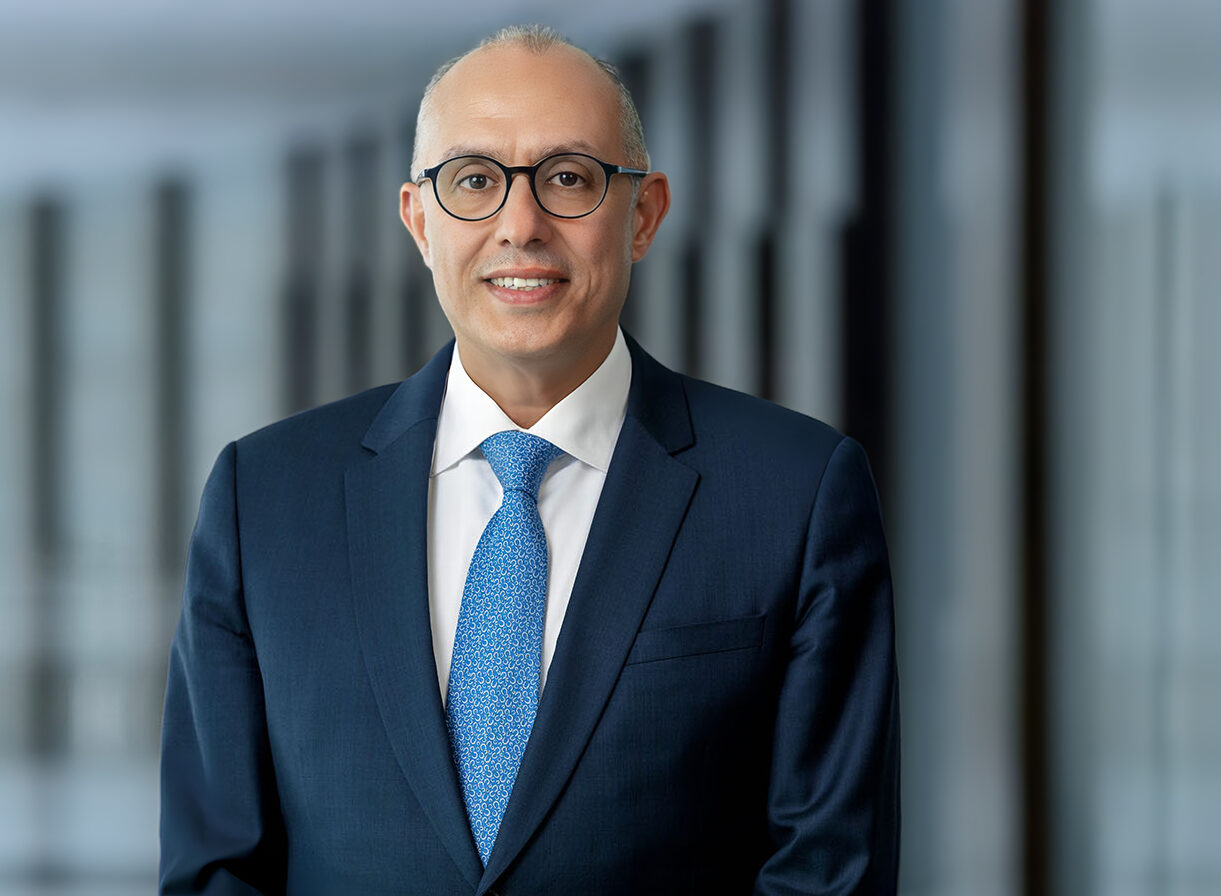- Achieving Your Critical & Essential Results
- Executive Profiles
- Featured
- IQ Insigniam Quarterly® Magazine
Cultivating Cultural Intelligence
With a career spanning six continents and a deep understanding of emerging markets, John Davison’s international experience has profoundly shaped his approach to executive leadership.
As former CEO of Zuellig Pharma and current board chair of PT. Greenfields—as well as an advisory board member at Phillips Pharma Group—Mr. Davison has an incredible, dual perspective of what is required of executive teams and governance boards in order to achieve critical results for their enterprise.
John Davison’s track record of orchestrating turnarounds at companies like Zuellig Pharma and Danone—where he served as regional president over the APAC, Middle East & Southern African markets—has also afforded him incredible insight into how to align stakeholders around a compelling purpose, foster strategic partnerships, navigate global crises, and seize opportunities effectively.

Privy to the unique challenges that arise when attempting to strike a balance between oversight and support, Mr. Davison emphasizes the importance of adaptability, resilience, and cultural intelligence in successfully managing diverse teams and overcoming challenges.
“I studied Modern Languages from an early age, and that’s probably one of the reasons I’ve always sought out international roles,” he says. “I’m sure this has also had a major effect on my personality and outlook on life. Spending time abroad, especially in emerging markets, forces you out of your comfort zone. You quickly learn to cope with uncertainty and risk. You get comfortable moving along the road less traveled and making decisions when you don’t have all the facts you ideally want. Operating in different cultures and languages teaches you to listen, to really listen, to understand what’s happening around you. You must be more aware of your surroundings, and you become more intuitive, relying on instinct to survive and succeed. This has made me a more empathetic and open-minded manager than I would otherwise have been, and certainly a much better communicator.”
Working internationally also made John Davison more aware of the need to be fully available to his teams, wherein it is imperative to actively engage with various stakeholders, whether it entailed visiting local factories or interacting with sales teams, customers, and business partners. For Mr. Davison, working in international settings fostered resilience, as it often entailed spending extended periods away from family and friends, necessitating a high level of self-reliance. He believes these attributes are essential aspects of effective leadership in dynamic and demanding environments.
“During the last two decades, I’ve been deeply embedded in emerging markets and I’ve had to develop a much thicker skin than when I was operating in the U.S. and Europe,” he says. “This comes from years of dealing with unexpected crises and working to deliver results despite disruption.”
High-Stakes Leadership
Crisis management is a concept John Davison understands on a scale few can comprehend. While at Danone, early in 2011, Mr. Davison’s team in Japan had to contend with the 9.0 megathrust earthquake and ensuing Tsunami that led to the Fukushima nuclear crisis.
Meanwhile, his team based in Thailand was forced to deal with widespread flooding that necessitated rebuilding their Bangkok factory. As if that wasn’t enough, his team in Indonesia was significantly impacted by volcano eruptions while his Middle Eastern team found themselves in the Arab Spring.
“Any one of these would have been a major challenge, but dealing with all of them simultaneously tested our resilience as a regional team to the extreme,” says Mr. Davison. You develop a mindset of being ready for anything because, across such a broad group of businesses, the chances are you will be coping with some kind of crisis somewhere most of the time.”
More recently, when John Davison joined Zuellig Pharma in 2014, the company was faced with an outdated, malfunctioning enterprise resource planning (ERP) system that threatened to bring the company and its healthcare clients to a complete standstill. As Asia’s leading pharma distribution company, Zuellig Pharma played a central role in supporting the healthcare systems in many countries—therefore a breakdown was potentially catastrophic.
“Had we not resolved it before the COVID pandemic, then the company would have likely have gone under,” says Mr. Davison. “Instead, because of the turnaround we engineered by establishing a highly robust digital ERP backbone, our company performed through COVID while many others almost collapsed. We were more than crisis-ready in that sense.”
For context, when the COVID pandemic first swept the globe, several Zuellig Pharma warehouses risked closure if any infections were detected. Mr. Davison says he was “bowled over” when—in response to this threat—dozens of front-line colleagues opted to sleep in the warehouse to avoid the risk of infection rather than trigger a service shutdown. Through their dedication, says John Davison, the company was able to continue supplying life-saving medicines and vaccines to thousands of patients and consumers across Asia at a time when many healthcare systems were close to breaking point.
“This resilience came from having a strong sense of purpose and a deep understanding of their role in fulfilling it,” he says. “We had spent the previous five years driving a clear strategy around a new purpose: ‘making healthcare more accessible.’ By embedding this across the entire organization, when the rubber hit the road with COVID, we didn’t need to ask our teams to step up; they just did. They knew that thousands of lives depended on us, they knew what they had to do, and I was so proud that they just got on and did it.”
Cultivating Resilience
As evidenced by his leadership tenure, qualities such as resilience and perseverance have been essential aspects of Mr. Davison’s success as an executive leader. Yet, like any muscle, these qualities had to be continually tested and strengthened over time. The key to maintaining high levels of employee engagement needed to sustain organizational momentum from one existential crisis to another has been his ability to cultivate a mindset of resilience within and across every level of the large enterprises he has led.
“Cultivating a mindset of resilience comes from a combination of factors, but it starts with a compelling purpose,” says John Davison. “For Zuellig Pharma, the team aligned around a mission of making healthcare more accessible. In an environment where you can’t take healthcare for granted, this purpose resonated on so many levels: if you’re a van driver delivering to hospitals, a medical sales rep detailing a new product to a doctor, or a regulatory affairs manager navigating a complex drug registration process—every single employee was able to identify with this single purpose of ‘making healthcare more accessible’.”
Furthermore, in a turnaround situation, Mr. Davison says ingraining a resilience mindset starts by ensuring your team truly understands and acknowledges the predicament in which they find themselves. Once they grasp the gravity of the situation, leaders are in a much better position to help them understand the need to change and, with their help, figure out how to change.
“Through this, together you can build a new vision of the future, a new purpose to drive towards,” he says. “A key success factor is achieving strategic alignment of the key stakeholders—from the CEO to the executive team, as well as the board and shareholders—which can be achieved when you are well-equipped to mobilize the organization to do great things. With the right backing and the right people, there is nothing more energizing than driving a turnaround.”
John Davison also says it’s critical to establish the “strongest possible functional backbone” in a company, with subject matter experts leading in key functional areas, depending on the industry, as they set the bar for execution globally and in the market. Additionally, he says, it further helps if these functions are connected to each other through well-defined business processes, clear decision-making guidelines, and robust management systems. From his perspective, this is how great companies institutionalize resilience.
“The role of the CEO in all this is to absorb chaos and transmit clarity—you need to be able to step back from the action and focus on nurturing an environment in which your team can thrive,” says Mr. Davison. “You must build a strong sense of mutual trust, ensure your team connects with one another, and remove the typical communication barriers that emerge, for example, between functions and markets. Above all, as a leader, you need to instill a sense of fun—there are not enough business books written about this, but it’s just as important.”
Says Mr. Davison, “One of the nicest compliments I was ever paid as CEO was that I always took my job seriously, but never took myself too seriously. Bringing your personality into the role and judiciously injecting humor can make a huge difference in motivating a team. It diffuses tough situations and reminds people that there’s life beyond the boardroom.”
“As a CEO, finding the right balance between diving into the details of your operations and setting direction and empowering your team is an art, not a science. John has honed this skill in many environments and cultures, always starting with a compelling purpose that brings people together.” —Katerin Le Folcalvez, Consultant & Partner at Insigniam & Elixirr
Goodbye Corner Office, Hello Boardroom
Yet, for all his success at both the executive and board governance levels, the transition from CEO to director is not without its own set of inherent challenges. The most eye-opening of which for John Davison was separating himself from the chief executive mindset.
“When transitioning from CEO to Chair, one of the biggest challenges is to stop thinking you’re still the CEO,” he says. “The first time I was invited to chair a company, it was in Korea for a portfolio company of a leading global PE Group, and I’d just finished my stint as CEO at Zuellig Pharma, which was a very hands-on role. After the first Board meeting, the local investment lead rang up the operating partner who’d appointed me to complain that I was acting as if I were the CEO! Thankfully, my partners saw the humorous side and after a quick chat, I was able to make some minor style adjustments and get things back on track.”
Mr. Davison counsels that what may have made you a successful CEO may make you a nightmare chairperson. From his purview, a non-executive director needs to find the right balance between diving in to intervene all the time versus staying silent in the background. This is why the ability to course correct an organization or leader before they veer too far off-track can be an art form, he says.
“If you’re too hands-on, you risk overtly undermining the leader and executive team—yet, if you are too hands-off, you may altogether miss the opportunity to prevent a disastrous wrong turn,” says Mr. Davison. “After all, you’re there to look after the interests of shareholders, so it’s a balance that you really do have to get right. Critical and essential to this balance is maintaining emotional distance to ensure objectivity while being close enough to the action to judge what’s going on in the organization. As chair, you need to build trust with your CEO to maintain an open and transparent dialogue on how the company and organization are progressing. You also need to listen to your board colleagues to gauge their evolving perspectives, and to validate your own perception. It’s certainly a team effort, not a one-person show.”
The strength of alignment and collective action is also foundational to the success of enterprise transformations and large-scale turnarounds, says Mr. Davison. Once a board and leadership team are aligned on a transformation strategy and agenda, the board and the executive team each have a set of clearly defined responsibilities.
Ultimately, their success hinges on their mutual ability to achieve what is critical and essential to each group and the organization at large.
“To drive transformation, a board first needs to secure the right people for the job, starting with the CEO, and then ensure that the CEO can hire the right executive team,” advises Mr. Davison. “This team then must develop a compelling transformation plan behind which the board and shareholders can align. The board then needs to ensure the plan is adequately funded and well executed. If the board can secure these first two steps, the third is to ensure the team is properly motivated and rewarded for its efforts through incentives that are fair both to shareholders as well as to the organization.”
Additionally, he says, an attentive board will then continue to ask key questions along the way, such as: has the team identified the right pressure points to drive change; are objectives sufficiently bold; are the right KPIs being tracked; are sufficient resources in place to execute the transformation; what barriers remain; and are there weak links in the team?

“Throughout the transformation process, a well-functioning board acts as a constant and consistent sounding board for a CEO and executive team as they move through their key management processes—strategic planning, resource allocation, performance monitoring, and reward.”
Conversely, he says, an executive team needs to feel it can trust its board to provide support along this challenging journey: being tough but fair, setting stretching but achievable performance targets, mediating with shareholders on resources and timing, helping ensure the organization paces itself as it aims to deliver.
“Getting this wrong can quickly burn a good team and set the business way back in its transformation,” he says.
Beyond the realm of transformation, the idea of “getting it wrong” can also be a useful learning tool for leaders at the executive level, as they can provide an opportunity to reflect, regroup, and move forward more effectively. John Davison does not shy away from discussing his own challenges and setbacks, as they were instrumental in developing his own resilience mindset.
“There have been plenty of setbacks in my career, but thankfully also a few triumphs,” he quips.“Yet, the lessons learned from setbacks tend to last longer than those that come from triumphs. The human psyche, or at least mine, tends to dwell on what could have been done better when we have fallen short. This is important because I have always tried to stay grounded and grateful for whatever success has come during my career.”
Specifically, Mr. Davison recalls working at Danone when development plans changed due to external challenges on a global level.
“One of my toughest assignments was 15 years ago, running Asia, the Middle East, and Southern Africa for Danone’s Dairy Division,” he says. “At the time, the core Europe business was struggling to navigate flat consumer markets and tough regulatory change, while simultaneously, the Group was forging ahead with important acquisitions in Russia and later the USA. These activities soaked up all the company’s resources, making life very difficult in emerging markets, where capital investments had already been made—such as factories in Thailand, Korea, Iran, Indonesia, and Australia, to name just a few—and further resources were very limited to follow through on these initial investments, making it much more difficult to build consumer demand or the best route to market. It felt a bit like being sent on a mission to Mars, only to realize halfway that you probably won’t have enough fuel to get back.”
Such challenges re-impressed upon Mr. Davison the importance of strategic focus, “sizing the prize” in each market, and assessing upfront what it would really take to win in each geography. For Mr. Davison, leading the emerging market charge helped him develop a much more agile and entrepreneurial mindset to keep the businesses on track.
“These are business disciplines I’ve tried to uphold ever since,” he says. “I look back with pride at some of the businesses we did manage to build and the many partnerships we created. And I certainly remember with great respect some of the great people I worked with on those challenging assignments.”
Advice for Tomorrow’s Board Directors
For executives interested in leveraging their experience at the board level, John Davison recommends starting that journey sooner rather than later, as the rewards that come from that experience can be transformational.
“If you’re interested in governance, don’t delay it too long,” he recommends. “People may assume you wait until the twilight years of your career to join a board, that it’s something you turn to in retirement when you step back from full-time work. This may well be true for some, but in retrospect, I wish I’d gotten involved in governance work earlier than I have, and more broadly than purely in a business setting.”
Additionally, he counsels others exploring board directorships not to limit themselves strictly to business-related pursuits.
“I’ve really enjoyed my years serving on the Advisory Board at the Lee Kong Chian School of Business at Singapore Management University. Watching an educational institution evolve rapidly from its relatively recent founding has been very rewarding. I hope to take these valuable experiences in education elsewhere when my tenure runs its course in the next year or two.”
Lastly, he advises others to remember that there is value in all board-level experience, not just with Fortune 500 organizations.
“Companies are crying out for smart, experienced managers to provide guidance and governance—not just big corporations, but also smaller, less organized companies starting out with great energy and ideas but maybe lacking in experience to chart the best course forward. I recommend starting somewhere where you can hit the ground running, and aim to focus on a sector you’re passionate about, as this gives you added motivation to stay current. For me, beyond the business world, that’s education, music, and nature. I certainly look forward to finding new opportunities in these areas.”
John Davison has 35 years of experience in consumer products, healthcare, technology, and retail. As a corporate director, he serves as board chair of PT. Greenfields Indonesia, and is an advisory board member for Phillips Pharma Group. He also teaches at leading Swiss business school IMD. Previously, he served as CEO of ekaterra, Unilever’s $3B tea division (now known as Lipton Teas & Infusions), driving its successful carve-out & sale to CVC Capital Partners. Prior to joining ekaterra, Mr. Davison was CEO of leading healthcare services provider Zuellig Pharma, where he drove a major transformation by redefining its mission to make healthcare more accessible through world-class distribution, commercial solutions, and digital technology. Prior to this, Mr. Davison was president of Danone’s Dairy Division in Asia, the Middle East, and Southern Africa, building teams in 20 countries and opening new factories in Korea, Australia, Thailand, Iran, and Iraq. He is a graduate of Cambridge University and Harvard Business School.



